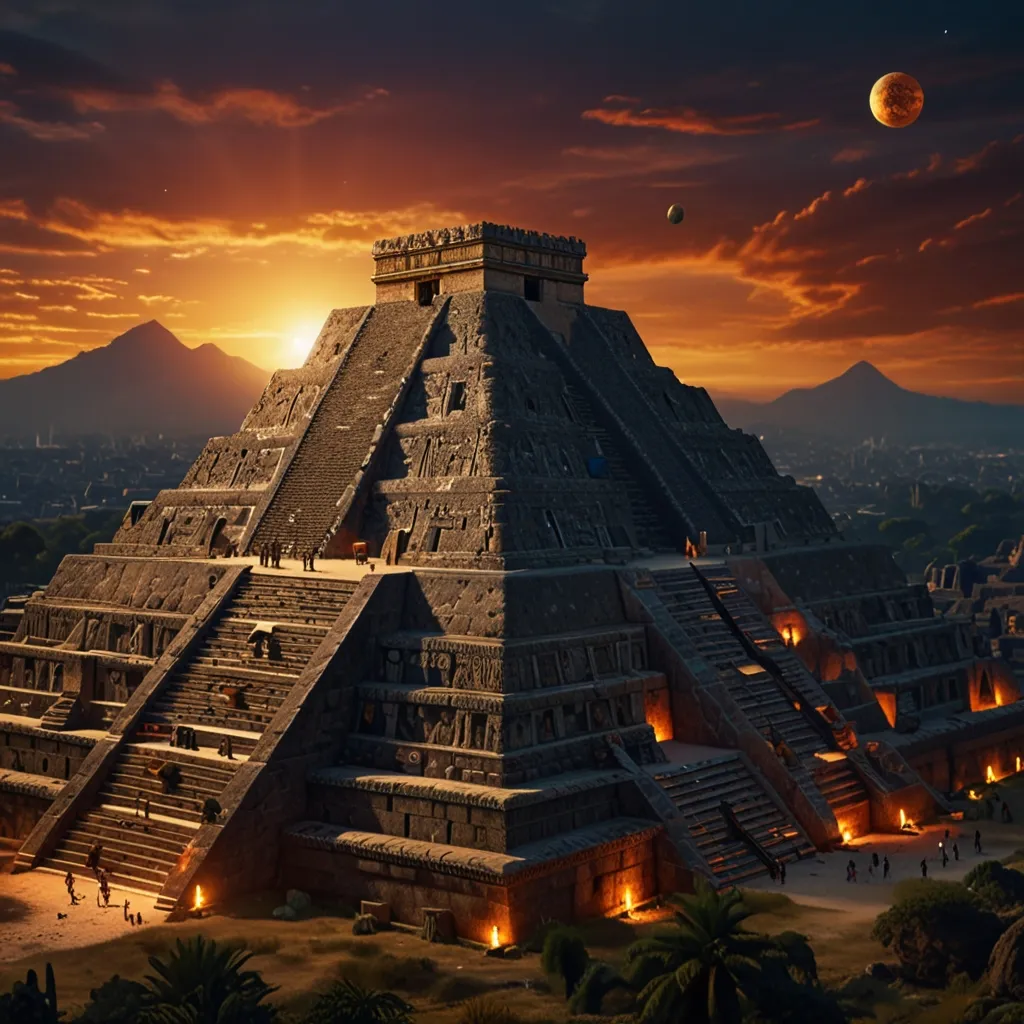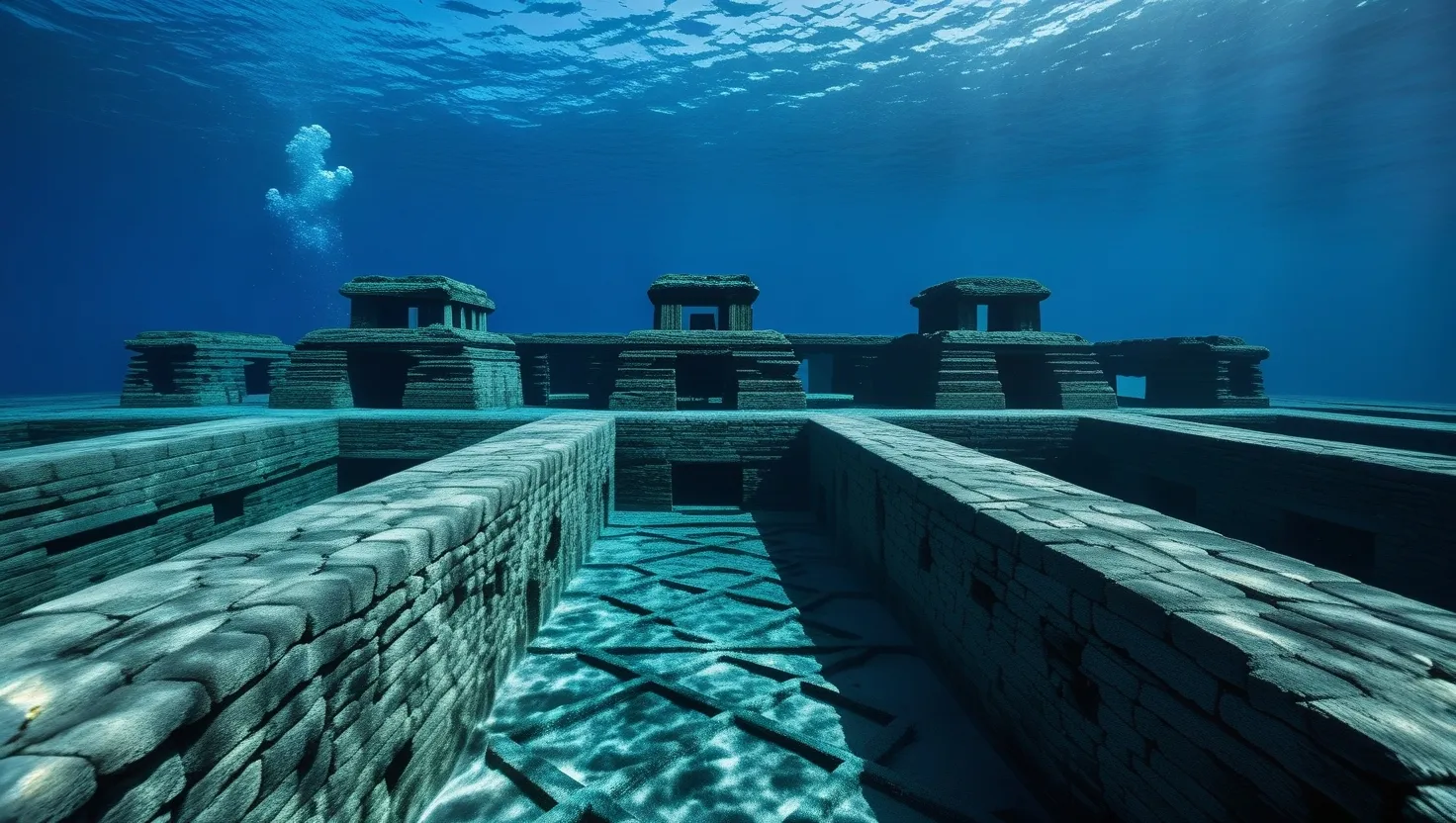The mysteries of ancient civilizations constantly amaze me, and one of the most fascinating tales is that of Mexico City and its connection to the ancient Aztec metropolis. Beneath what is now a bustling modern city lie the remnants of a once-great civilization that shaped much of Central Mexico from the 14th to the 16th century. The Aztecs, known for their sophistication, didn’t start in Mexico City. Their story begins far to the north, in a place called Chicomoztoc.
Chicomoztoc, meaning “place of the seven caves,” has always teetered on the edge between myth and reality. According to Aztec lore, this is where seven tribes, including the Aztecs, originated. These tales, once thought mythical, find some credence among scholars who believe Chicomoztoc was real, possibly located at the site now known as Teotihuacan.
Teotihuacan itself is shrouded in mystery. This ancient city, located about 30 miles northeast of Mexico City, is one of the most significant archaeological sites in the Americas. And what’s mind-blowing is that deep beneath the Temple of the Sun, archaeologists discovered a cave matching the Aztec description of Chicomoztoc.
The Aztecs believed that their gods created them in these seven caves. This creation myth involves a massive flint knife crashing to Earth, disgorging 1,600 gods who birthed human civilization. Such vivid imagery leaves one wondering if these descriptions are of divine acts or perhaps interpreted sightings of otherworldly events. Could it be that these stories hint at ancient extraterrestrial encounters?
Archaeological explorations at Teotihuacan reveal even more intriguing details. This city’s grandeur, sprawling over eight square miles, with a population at its peak nearing 100,000, pushes the boundaries of what we understand about early Mesoamerican civilizations. The lack of hieroglyphs or detailed historical records leaves a gaping hole in our knowledge of who built Teotihuacan and why it ultimately fell into ruin.
Walking through Teotihuacan, visitors can’t help but be awestruck by its scale. The towering Pyramid of the Sun, the smaller yet equally impressive Pyramid of the Moon, and the Temple of Quetzalcoatl, dedicated to the Feathered Serpent God, form the cultural and religious heart of the city. The Avenue of the Dead, a grand thoroughfare lined with smaller pyramids, platforms, and residential quarters, speaks of a highly organized society.
One can’t discuss Teotihuacan without mentioning the Golden Balls found beneath the Temple of Quetzalcoatl. These orbs, covered in golden flecks, were discovered in a previously unknown tunnel, suggesting significant ritualistic importance. Imagine these balls glittering in torchlight, mimicking the night sky within the sacred cavern. Could these be representations of planets, hinting at knowledge of astronomy far beyond what we credit to ancient civilizations?
Beyond Mexico, the Maya civilization also displays an advanced understanding of astronomy. The Dresden Codex, one of the few surviving Mayan books, meticulously records the movements of celestial bodies, notably Mars. This codex breaks days into groups aligning with Mars’ synodic period, showcasing a precise grasp of planetary cycles.
Ancient civilizations are often depicted with artifacts that challenge our understanding. From the Mayans with their astronomical insights to the giant megalithic heads and figurines depicting possible flying craft, these cultures leave behind more questions than answers. In fact, some theorize that the Catholic Church, during the Inquisition, aimed to erase this ancient knowledge to control the narrative of human history.
Theories of extraterrestrial visitation tie into many unexplained aspects of these ancient cultures. If such beings did interact with early humans, perhaps they decided to step back, allowing civilization to grow independently. Ancient astronaut theorists believe that these visitors left traces, buried under millennia of earth, waiting to be uncovered.
Recent discoveries in Mexico have reignited interest in these ancient stories. From new Maya artifacts at Teotihuacan, expanding our understanding of this site, to hidden caves under Chichen Itza, and a city the size of Manhattan unearthed near Lake Patzcuaro, technology like LIDAR scanning is revealing more than ever before.
In many ways, modern technology is finally matching the ancient imagination. We are beginning to uncover the larger puzzle of human origins. And while we may never find every piece, the thousands we do have form a compelling picture. Structures like the Pyramid of Kukulkan in Chichen Itza, designed to dazzle with light and shadows during equinoxes, reflect advanced astronomical knowledge that seems almost otherworldly.
Further afield, parallels can be drawn with mysterious structures like the Dragon Houses of Evia, Greece. These megalithic wonders, associated with Zeus and sitting atop mountains, pose similar questions about ancient engineering and possible extraterrestrial connections. The name “Dragon,” often reflecting both gods and flying craft, indicates a cultural memory of divine or possibly alien visits.
Whether in Mexico, Greece, or elsewhere, humanity’s ancient past teems with stories that hint at more than mere myth. The Dragon Houses, the pyramids, the celestial codices—all these remnants invite us to reconsider our history. They suggest that our ancestors might have experienced something beyond the ordinary, encounters that shaped the very course of civilization.
Ultimately, the question remains: were these ancient wonders built solely by human hands, inspired by gods, or perhaps influenced by visitors from beyond our world? As we dig deeper, both literally and figuratively, each discovery brings us closer to understanding our true heritage. And who knows, maybe the proof of extraterrestrial involvement lies just beneath our feet, waiting for the light of day.






